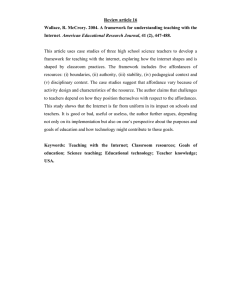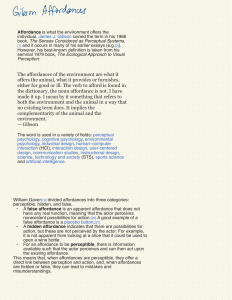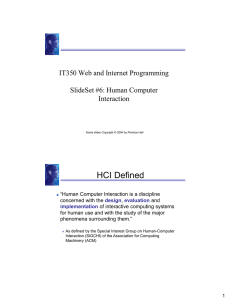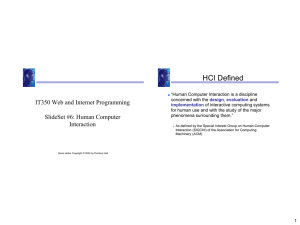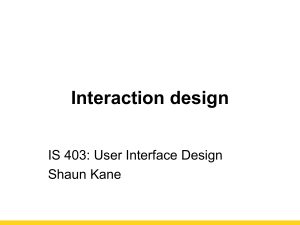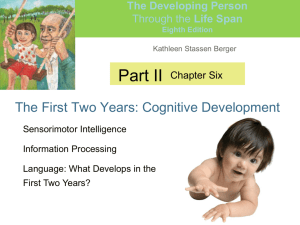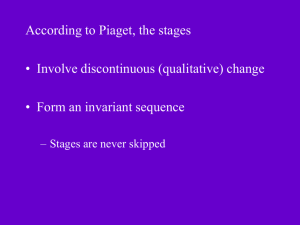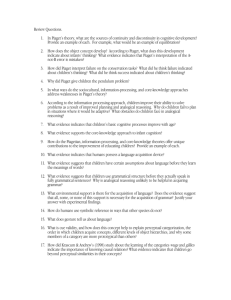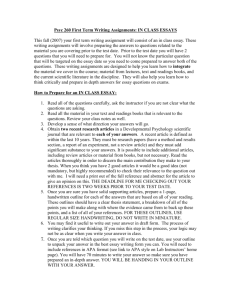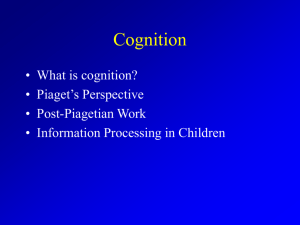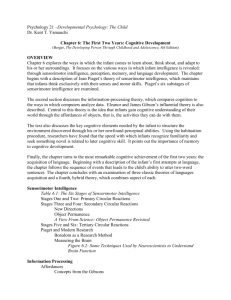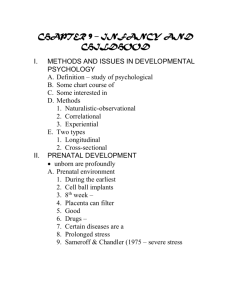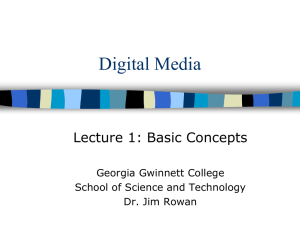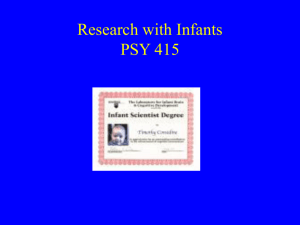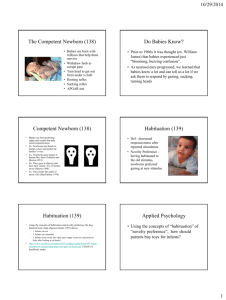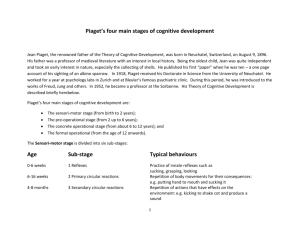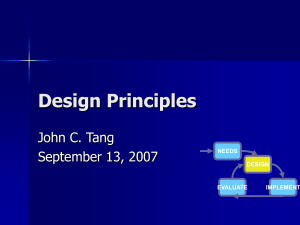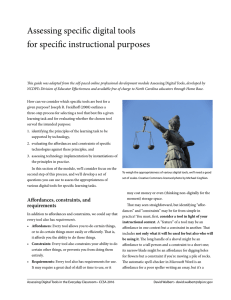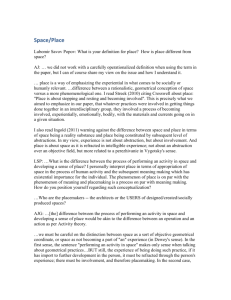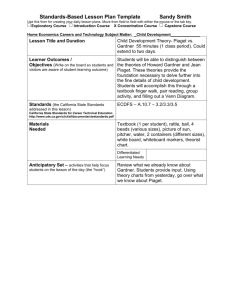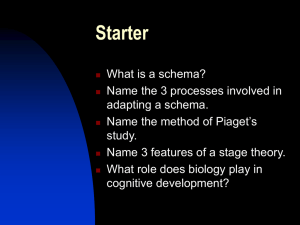Chapter 6: First Two Years : Cognitive
advertisement
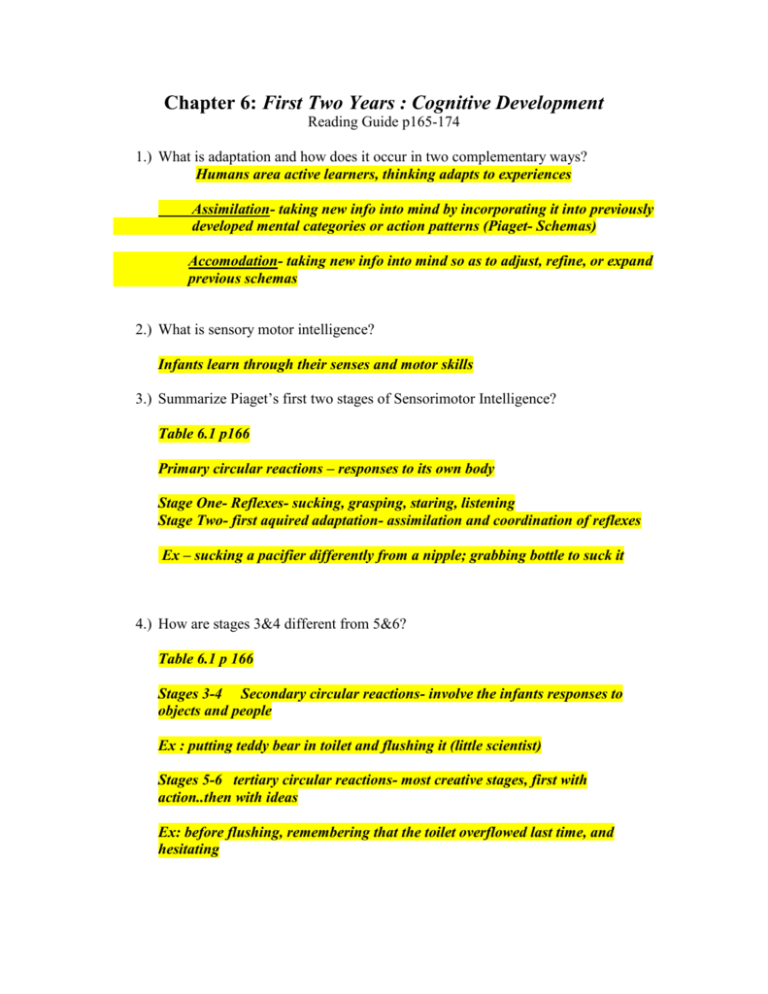
Chapter 6: First Two Years : Cognitive Development Reading Guide p165-174 1.) What is adaptation and how does it occur in two complementary ways? Humans area active learners, thinking adapts to experiences Assimilation- taking new info into mind by incorporating it into previously developed mental categories or action patterns (Piaget- Schemas) Accomodation- taking new info into mind so as to adjust, refine, or expand previous schemas 2.) What is sensory motor intelligence? Infants learn through their senses and motor skills 3.) Summarize Piaget’s first two stages of Sensorimotor Intelligence? Table 6.1 p166 Primary circular reactions – responses to its own body Stage One- Reflexes- sucking, grasping, staring, listening Stage Two- first aquired adaptation- assimilation and coordination of reflexes Ex – sucking a pacifier differently from a nipple; grabbing bottle to suck it 4.) How are stages 3&4 different from 5&6? Table 6.1 p 166 Stages 3-4 Secondary circular reactions- involve the infants responses to objects and people Ex : putting teddy bear in toilet and flushing it (little scientist) Stages 5-6 tertiary circular reactions- most creative stages, first with action..then with ideas Ex: before flushing, remembering that the toilet overflowed last time, and hesitating 5.) What is object permanence and when does it occur? Refers to awareness that objects or people continue to exist when they are no longer in sight…….about 8 months 6.) Is object permanence inborn? No emerges during stage 8 months 7.) What is habituation? Give some examples. Process of getting used to an experience after repeated exposure to it Ex. School lunch …same lunch, kids same sound, same picture… p171 classic habituation study 8.) How have functional MRI’s further helped us understand what preverbal infants are thinking? Measures brain activity indicating memories, goals and mental combinations…bursts of electrical activity in one area of brain means neurons are firing 9.) What is information –processing theory? Does it compare or contrast Piaget’s idea? Info process theory- modeled after computer….a step by step description of the mechanisms of human thought aids our understanding of the development. Begins with input from senses, proceeds to brain reactions, connections, stored memories…concludes with some sort of output. Info processing theory research has overturned Piaget’s findings. 10.) What is an affordance? The environment (people, places, objects) affords or offers, many opportunities for perception and interaction….each of these opportunities is called an affordance 11.) Which particular affordance is perceived and acted on depends on what? Depends on four factors: sensory awareness, immediate motivation, current development, and past experience 12.) Do adults and children have the same affordances? Give some examples of this. No…..toddlers idea of what affords running might be any unobstructed surface….isle at Meijer, a grass field, long hallway in an apartment, road. 13.) What is a visual cliff? Provides a visual illusion of a sudden drop off. Affordances that an infant perceives evolve as the infant gains experience P174 14.) How does the idea of affordances pertain to Mr. Conlan’s 2yr old son climbing and standing on the table or arm of a couch. They do not realize that one affordance of the is falling …that realization comes after they start crawling…perhaps a tumble off a bed or couch.
